★Collection of TCM Learning Videos (Massage, Moxibustion, Gua Sha)
01Bai Hui (Hundred Meetings) Point Promotes Qi and Blood Flow
Key Point for Addressing Hair Loss Issues (Hair Loss, Poor Hair Quality)
Method: Use a fist to tap the Bai Hui point rapidly and intermittently for about 5 minutes each time. Ensure the pressure is moderate. Alternatively, comb the scalp until it feels slightly warm, or use your fingers to comb the hair each morning and before bed.
Bai Hui is located at the center of the top of the head, at the midpoint of the line connecting the tops of both ears.

02Da Zhong (Great Bell) and Tian Zhu (Heaven Pillar) for Mental Clarity and Brain Health
For those feeling lethargic and lacking energy
Method: Massage Da Zhong and Tian Zhu points 30-50 times, or press and hold for 6 seconds before slowly releasing. Repeat as needed.
Da Zhong is located on the inner side of the foot, 1 cm below the inner ankle, in the depression just in front of the Achilles tendon attachment. Tian Zhu is located in the depression just below the occipital bone, about 2 cm lateral to the midline at the base of the skull.
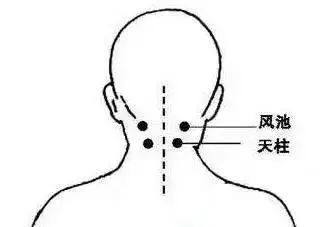
03For Migraines, Target the Luan Gu (Shuai Gu) Point
(Migraines, Qi and Blood Stagnation Type. Symptoms: Seeing stars, blurred vision, throbbing pain, possibly accompanied by nausea and irritability)
Method: Massage the Luan Gu point every night at 11 PM for 10 minutes. It can also be done at any time. This not only treats migraines but also promotes sleep.
Luan Gu is located 1.5 cun above the apex of the ear, directly opposite the ear tip.
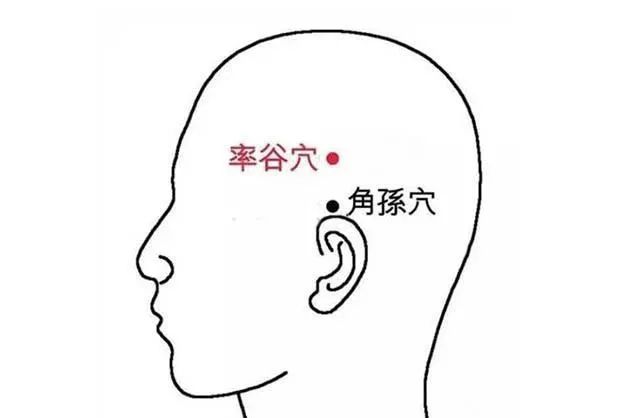
04Jie Xi (Relieving Stream) Point for Dizziness and Vertigo
(Dizziness due to Qi and Blood Deficiency, symptoms include dizziness upon standing, blackouts, restless sleep, and forgetfulness)
Method: Press the Jie Xi point 10 times for 10 seconds each, then release. Repeat for a month; also perform ankle rotation exercises.
Sit cross-legged on the bed, holding the ankles and soles of the feet, and rotate slowly; or sit on a chair with toes on the ground and rotate around the ankle. Do this 100 times for each foot, morning and evening, for long-term health benefits.
The Jie Xi point is located at the intersection of the ankle and the foot, in the depression next to a hard tendon.
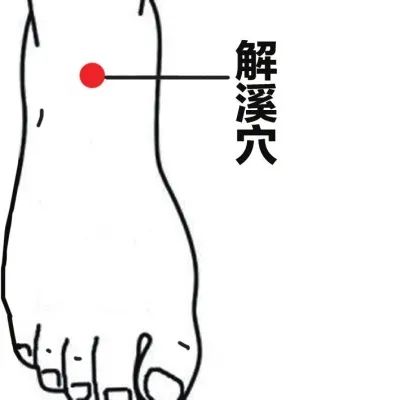
05For Mental Fatigue, Use Shen Ting (Spirit Court) and Yin Tang (Hall of Impression)
(For those who often feel mentally exhausted from computer work or heavy mental labor)
Method: Use the index and middle fingers to push from Yin Tang to Shen Ting, then press both points for 3-5 minutes until a slight warmth is felt. This can be done at any time. Massaging these points before bed can lead to deep sleep and alleviate insomnia and vivid dreams.
Shen Ting is located 0.5 cun above the midpoint of the hairline. Yin Tang is located at the midpoint between the two eyebrows.
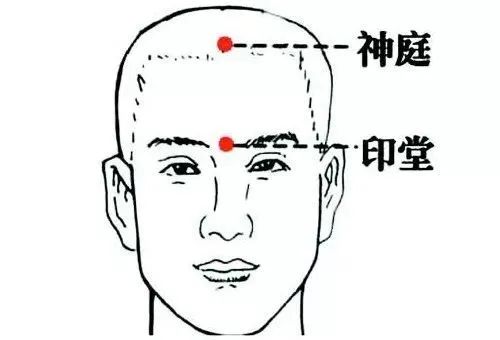
06Da Dun (Great Rush) Point for Quick Blood Pressure Stabilization
(For those with high blood pressure due to irritability and liver yang rising)
Method: Gently pinch the Da Dun point with your fingernail or apply moxibustion for 10-15 minutes, maintaining this for more than half a month. This point has a calming effect and can stabilize emotions; it can also be massaged for 2-3 minutes if unable to sleep.
Da Dun is located about 0.1 cun beside the outer corner of the big toe nail.
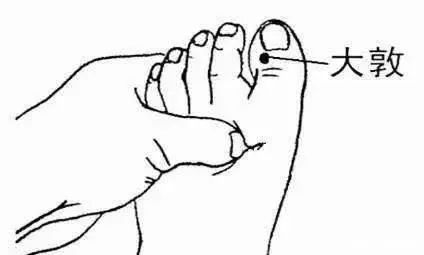
07Ting Hui (Listening Meeting) Point for Tinnitus and Hearing Loss
(For hearing loss, tinnitus, toothache, facial nerve paralysis, and facial paralysis)
Method: Massage the Ting Hui point 350-400 times for about 15 minutes to see results.
Ting Hui is located at the posterior edge of the mandible, just in front of the earlobe, in the depression when the mouth is opened.
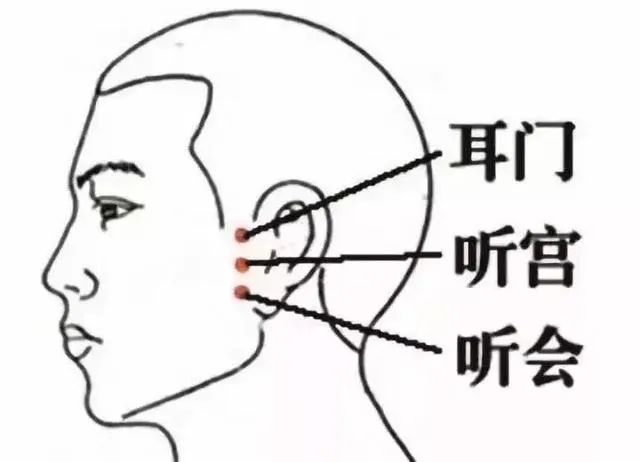
08Hou Xi (Back Stream) Point for Sufficient Liver Blood and Bright Eyes
(For myopia)
Method: Massage the Hou Xi point with the thumb and index finger simultaneously for 5 minutes. Maintain this practice regularly. Alternatively, press the Hou Xi point against a table edge or keyboard and roll back and forth for 3-5 minutes, stimulating it once every hour for good health benefits.
The Hou Xi point is located at the end of the transverse crease of the wrist, at the junction of the hard tendon and the soft tissue.

09Tong Zi Liao (Pupil’s Hollow) Point – A Magical Point
(For tearing in the wind, liver yin deficiency type)
Method: Massage the Tong Zi Liao point for 5-6 minutes, pressing 40 times each time to treat tearing in the wind. Additionally, pressing the Jing Ming point will enhance the effect.
Pressing the Tong Zi Liao point can also prevent the formation of crow’s feet.
The Tong Zi Liao point is located 1 cm lateral to the outer corner of the eye (where crow’s feet form). The Jing Ming point is located at the inner corner of the eye, at the junction of the nasal bridge and the inner eye corner.
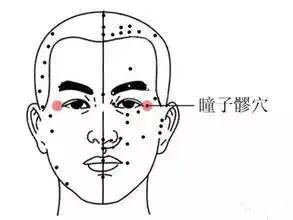
10Rubbing Jing Ming Point to Promote Bladder Meridian Qi and Blood
For Elderly Eyes (Presbyopia)
Method: Use the thumb pads to press the Jing Ming point vertically towards the deep part of the eye, pressing and releasing in a rhythm of four eights. Then use both thumbs to massage the bilateral Zan Zhu points for 2 minutes each, morning and evening, maintaining this practice regularly.
Another method: Use both middle fingers to massage the eyebrows 20 times; use all four fingers to massage the eyes outward 20 times; use both middle fingers to massage the nasal bridge upward 20 times; use both thumbs and index fingers to pull the earlobes downward 20 times.
The Jing Ming point is located in the depression at the inner corner of the eye. The Zan Zhu point is located at the inner side of the eyebrows, where the eyebrows wrinkle.
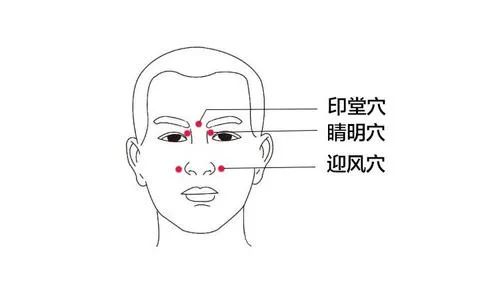
11For Dark Circles, Target the Si Bai (Four Whites) Point on the Stomach Meridian
(For liver and kidney deficiency, spleen and stomach weakness type)
Method: Use the second joint of the index finger to scrape the eye socket gently, twice a day, once before bed and once after waking, for at least 2 minutes each time. After scraping the eye socket, massage the Si Bai point. Scraping the eye socket can stimulate the Zan Zhu, Yu Yao, and Si Zhu Kong points.
The Si Bai point is located about 2 cm below the center of the pupil on the face.
This method can also help eliminate bags under the eyes!
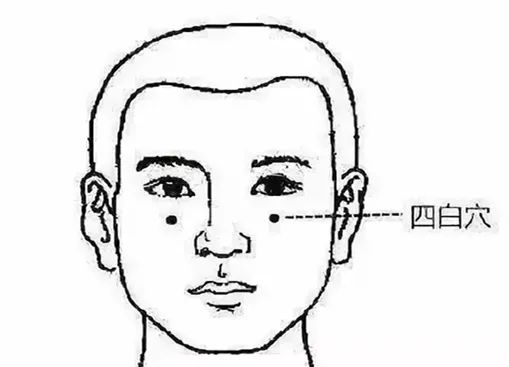
12For Eye Fatigue, Use Yang Xi (Yang Stream) Point
(For visual fatigue, eye strain)
Method: Close your eyes and use the thumb of the opposite hand to press this point until a feeling of strain is felt, then relax. Repeat for 2-3 minutes at any time. You can also stick rice or mung beans on the Yang Xi point with tape and stimulate it during free time.
The Yang Xi point is located on the dorsal side of the wrist, at the radial side of the wrist crease, in the depression between the extensor pollicis longus and brevis tendons when the thumb is raised.
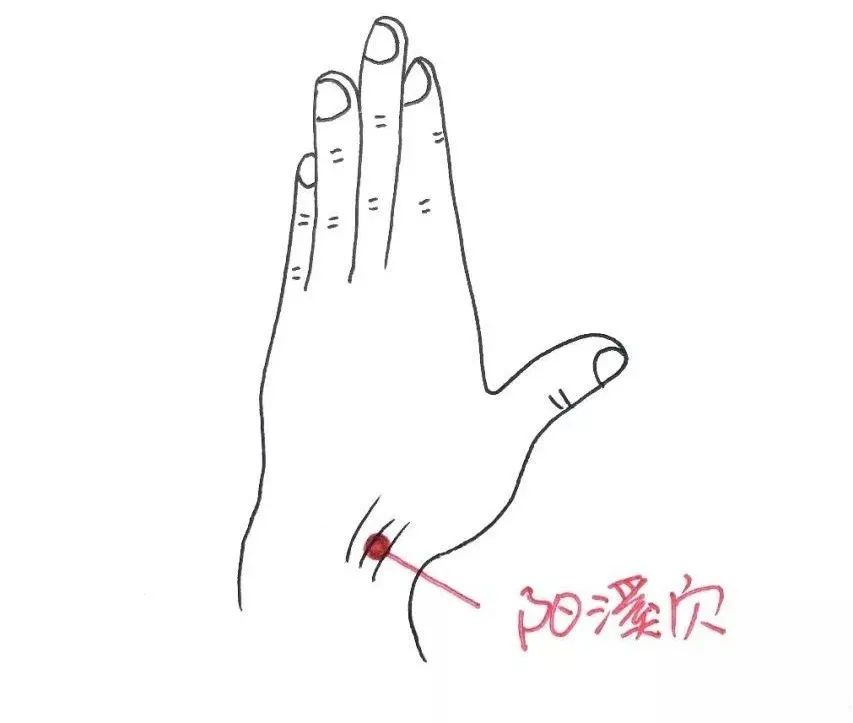
13For Rhinitis, Target the Ying Xiang (Welcome Fragrance) Point on the Large Intestine Meridian
(For allergic rhinitis, chronic rhinitis)
Method: Bend the thumb and use the joint to rub from the widest part of the nostril along the nasolabial groove up to the nasal bone, then return to the nostril. Repeat this massage 100 times or for 2 minutes. Maintain this practice regularly. Combining this with massages of the Yin Tang, Bi Tong, and He Gu points will enhance the effect.
The Ying Xiang point is located directly below the center of the eyeball when looking straight ahead, about half a thumb width from the nostrils; the Yin Tang point is at the midpoint between the two eyebrows; the Bi Tong point is at the upper end of the nasolabial groove.
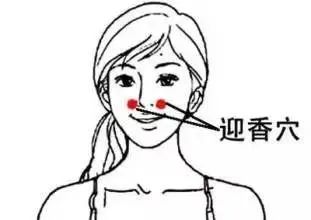
14For Double Chin, Use Ren Ying (Human Welcome) Point to Clear Stagnation
(For double chin)
Method: While exhaling, gently press the Ren Ying and Da Ying points for about 6 seconds each. Repeat pressing the Ren Ying point 10 times and the Da Ying point 30 times, or gently stroke down the neck with your hand, maintaining this practice regularly.
The Ren Ying point is located 3 cm lateral to the Adam’s apple. Find your Adam’s apple, and the point is about two finger widths to the side, where you can feel an artery pulsing.
The Da Ying point is located on the side of the jawbone, in the depression below the lips.

15For Skin Issues, Target the Zhi Zheng (Support Correct) Point
(For acne and flat warts due to spleen deficiency and dampness)
Method: Use kneading, pressing, and pinching techniques to massage the Zhi Zheng point with moderate pressure until a feeling of soreness is felt. Press about 100 times each session, maintaining this for half a month.
Flat warts are primarily caused by excessive dampness and spleen deficiency, so after massaging the Zhi Zheng point, combining it with the Feng Long point on the stomach meridian and the Yin Ling Quan point on the spleen meridian will enhance the effect.
The Zhi Zheng point is located on the back of the arm, 5 cun above the palm root, in the space between the muscle and bone.
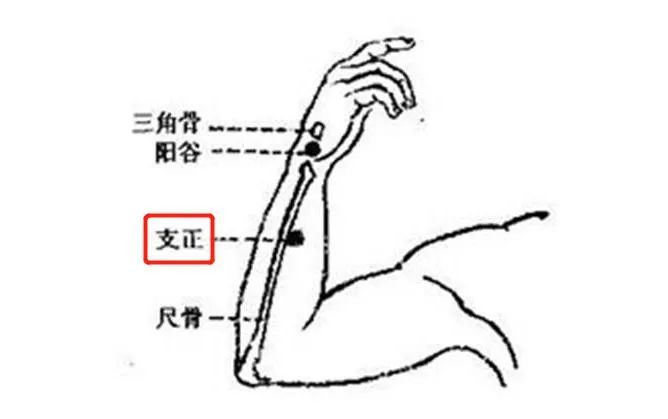
16For Age Spots, Use Qu Chi (Pool at the Bend) Point
(For age spots)
Method: Massage the Qu Chi point at any time. This point can clear heat from the large intestine, has cooling and moistening effects, and helps detoxify and purify the body.
The Qu Chi point is located at the outer end of the elbow crease, at the midpoint of the line connecting the ulnar notch and the lateral epicondyle of the humerus.
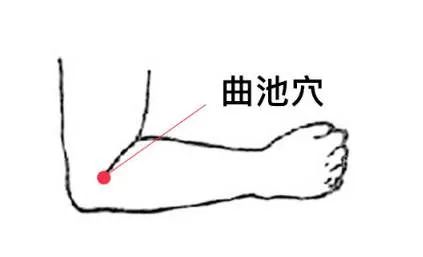
17For Acne and Cold Phlegm, Use Wen Liu (Warm Flow) Point
(For acne and cold hands and feet)
Method: Press the Wen Liu point firmly with the thumb until a feeling of strain is felt, massaging for 2-3 minutes, or apply moxibustion for 10-15 minutes. Do this once a day, maintaining this practice regularly.
The Wen Liu point is located 5 cun above the wrist crease, on the line connecting the Yang Xi and Qu Chi points.

18For Stomach Fire and Bad Breath, Use Da Ling (Great Tomb) Point
(For acid reflux, bloating, and poor digestion)
Method: Press the Da Ling point firmly with the thumb until a feeling of strain is felt, massaging for at least 3 minutes at any time.
The Da Ling point is located at the midpoint of the wrist crease.
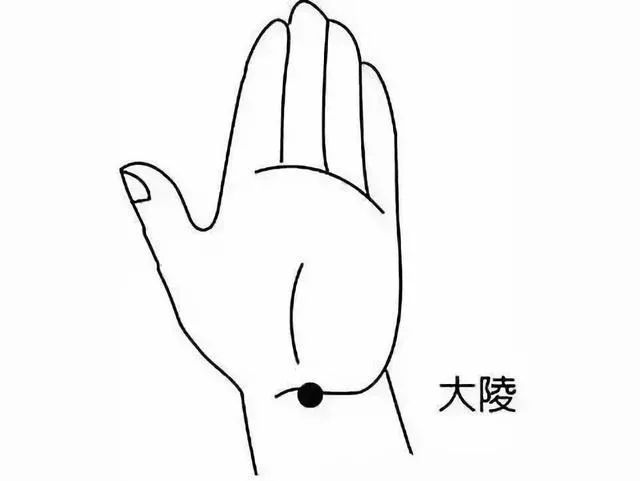
19For Oral Ulcers, Use Yang Gu (Yang Valley) Point
(For oral ulcers, heart fire type)
Method: Gently stimulate the Yang Gu point with appropriate pressure for 3 minutes, 3-4 times a day.
Oral ulcers are primarily caused by excessive heart fire, heat accumulation in the spleen and stomach, and cold in the liver affecting the stomach, along with weakness and overconsumption of rich foods leading to spleen dysfunction.
The Yang Gu point is located between the ulnar styloid process and the triquetral bone on the ulnar side of the wrist.
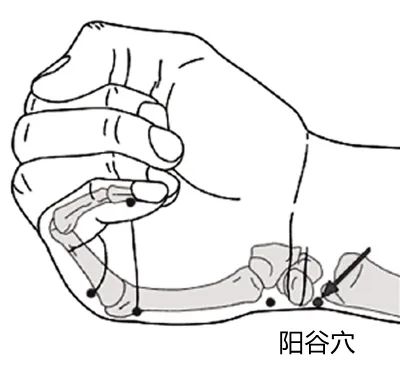
20For Temporary Aphasia, Massage Tong Li (Passage to the Heart) Point
(For aphasia)
Method: Massage the Tong Li and Ling Dao points for 2-3 minutes each.
Aphasia is primarily caused by Qi deficiency, blood stasis, wind, fire, and phlegm obstructing the liver yang, leading to insufficient nourishment of the brain, emotional agitation, and impaired circulation.
The Tong Li point is located 1 cun above the wrist crease.
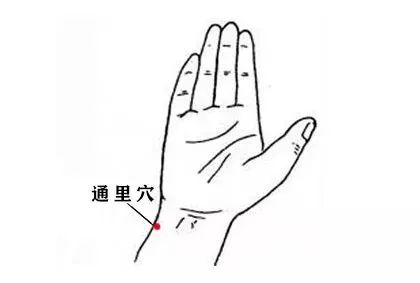
21For Sore Throat, Press the Shou Chi (Shou Pool) Points
To Release Lung Fire (For sore throat, chronic pharyngitis)
Method: Alternate massage the Shou Chi and Upper Shou Chi points. Press the Shou Chi point for 6 seconds, then press the Upper Shou Chi point for 6 seconds, repeating this 10 times, twice a day.
The Shou Chi point is located at the elbow crease, on the outer side of the forearm.
The Upper Shou Chi point is located 3-4 cm above the Shou Chi point.
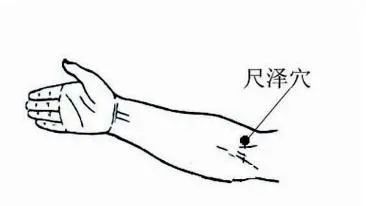
22For Liver Qi Stagnation, Use Wai Guan (Outer Pass) Point
(For plum pit qi)
Method: Massage the Wai Guan point for 10 minutes during an episode.
The Wai Guan point is located on the dorsal side of the forearm, 2 cun above the wrist crease, on the line connecting the Yang Chi and elbow tip.

23For Tonsillitis, Press the Qian Gu (Front Valley) Point
(For tonsillitis and sore throat)
Method: Massage the Qian Gu point for about 10 minutes.
The Qian Gu point is located at the outer side of the third joint of the little finger.
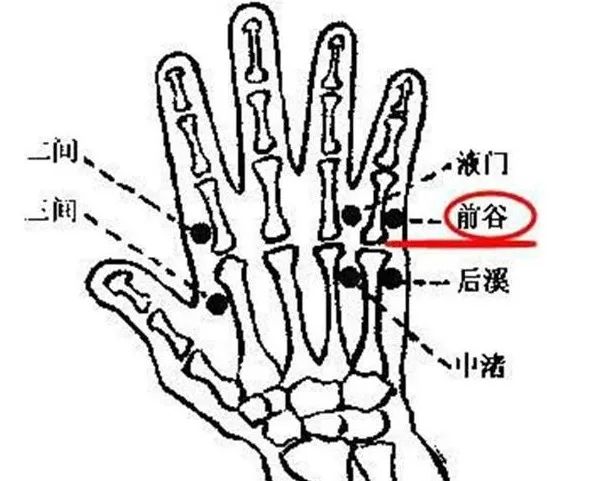
24Xuan Zhong (Suspended Bell) Point for Cervical Spondylosis
(For cervical spondylosis)
Method: Use the thumb to massage the Xuan Zhong point while the other four fingers hold the calf, massaging three times a day for 15 minutes each time. Symptoms will disappear after a week. Regularly perform the “Yong” character exercise.
The Xuan Zhong point is located 3 cun above the outer ankle tip, 1 cun behind the fibula.
The “Yong” character exercise involves standing straight with feet shoulder-width apart, using the neck as a wrist and the head as a pen, writing the character “Yong” in the air. Each character counts as one repetition, and you can do 20-30 repetitions (gradually increasing the number). While in this position, perform shoulder shrugs 30 times or frequently pat the neck muscles while moving the neck. Long-term adherence can improve blood circulation to the head, relax muscles, and prevent and treat cervical spondylosis.
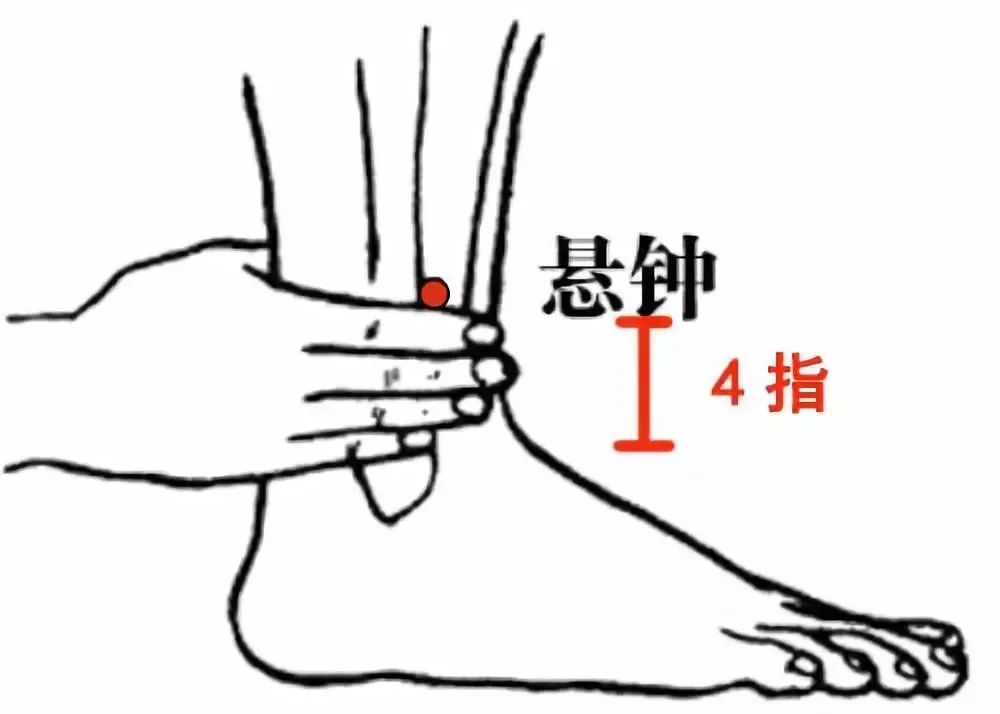
25For Lymphadenitis, Massage the Tian Jing (Heaven Well) Point
(For lymphadenitis, liver qi stagnation type)
Method: Gently massage the Tian Jing point, and you will see results in a week.
Lymphadenitis can be caused by several types, including liver qi stagnation, lung and kidney yin deficiency, lung and kidney yang deficiency, and deficiency of both qi and blood, all of which are closely related to the body’s invisible regulator, “qi”.
The Tian Jing point is located on the outer side of the arm, 1 cun above the elbow tip when the elbow is flexed.
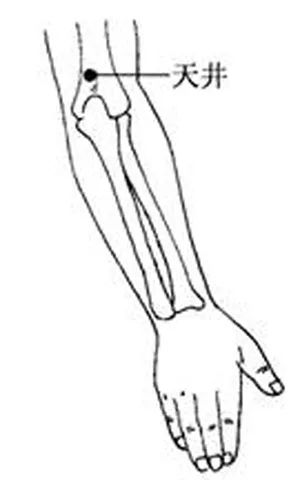
26For Chest Pain, Use Ling Dao (Spirit Path) Point
(For chest pain without organic heart disease)
Method: Massage the Ling Dao point three times a day for 3 minutes each time. Maintain this practice regularly. The Ling Dao point is located 1.5 cun below the wrist line.
The Ling Dao point is specifically for treating heart conditions and can help ensure smooth circulation of qi and blood to the heart.
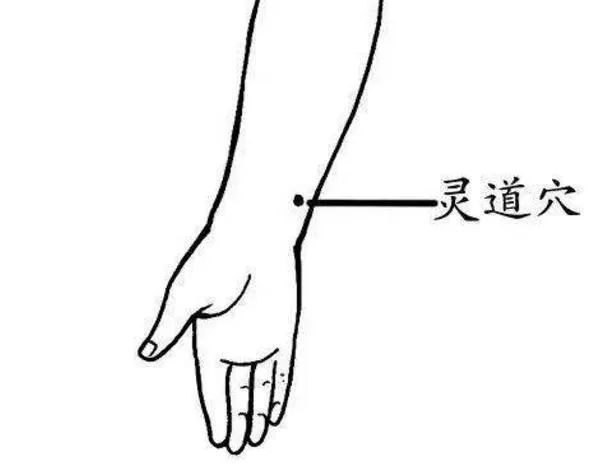
27For Irritability and Insomnia, Press the Shao Hai (Lesser Sea) Point
(For insomnia, heart-kidney disharmony type)
Method: Massage the Shao Hai point at any time.
Heart-kidney disharmony refers to a deficiency of heart yang, where heart fire cannot descend to the kidney, or kidney yin deficiency, where kidney water cannot ascend to the heart, leading to symptoms such as night sweats, irritability, and insomnia with vivid dreams. The Gu Gu point can also treat insomnia, particularly for those with excess yin fire.
The Shao Hai point is located at the midpoint of the inner side of the elbow crease, on the line connecting the inner epicondyle of the humerus.
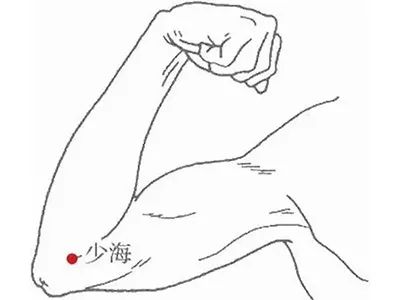
28Yin Xi (Yin Cleft) Point for Night Sweats
(For middle-aged and elderly individuals with night sweats)
Method: Massage both Yin Xi points with moderate pressure for 5 minutes each, and you will see results in half a month.
The Yin Xi point is located on the palmar side of the forearm, at the ulnar side of the wrist flexor tendon, 0.5 cun above the wrist crease. It has nourishing yin and blood effects.
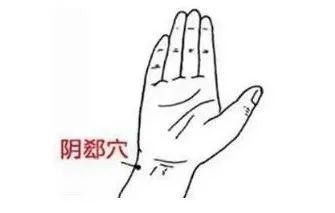
29For Chest Pain, Use Qie Men (Gate of Qi) Point
(For chest pain)
Method: Press the Qie Men point firmly for 3-5 seconds, pause for 1-2 seconds, then continue pressing for 2-3 minutes, or press firmly while rotating the arm inwards and outwards for about 2 minutes to relieve pain quickly.
The Qie Men point is located on the palmar side of the forearm, on the line connecting the Qu Ze and Da Ling points, 5 cun above the wrist crease. This point is one of the best and fastest pain relief points and has a good effect on blood circulation. It is located on the heart meridian.
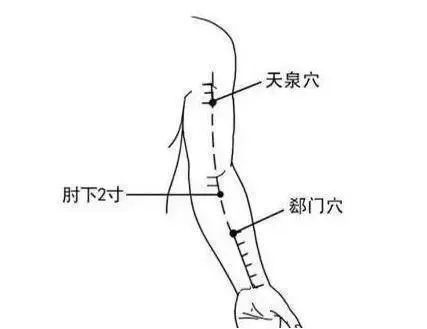
30For Preventive Health, Use Nei Guan (Inner Pass) Point
(For preventing and treating cardiovascular diseases)
Method: Firmly press the Nei Guan point for 2-3 minutes until a feeling of soreness, numbness, or swelling is felt, or stick a grain of rice on the Nei Guan point with tape and press it occasionally during free time.
Note: It is best to massage the pericardium meridian between 7-9 PM, half an hour after meals.
The Nei Guan point is located on the palmar side of the forearm, about 2 finger widths above the wrist crease, between the two prominent tendons. Make a fist and bend the wrist, and the point is located 2 finger widths down from the transverse crease, between the two tendons.
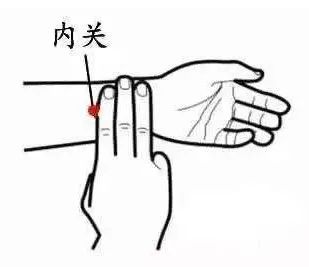
31For Weakness, Use Ji Quan (Extreme Spring) Point
(For chest tightness, palpitations, and shortness of breath in middle-aged individuals)
Method: Press the Ji Quan point daily until the fingers and arms feel numb.
The Ji Quan point is located in the armpit, where a large tendon is found. Pressing it will cause the ring and little fingers to feel numb, indicating the location of the Ji Quan point.
Qi is the commander of blood, and blood is the mother of qi. When qi stagnates, blood stagnates; when qi flows, blood flows. Pressing the Ji Quan point promotes qi flow and blood circulation. After pressing, gently pat down the arm along the midline to relieve chest tightness and facilitate breathing, while also resolving emotional stagnation.
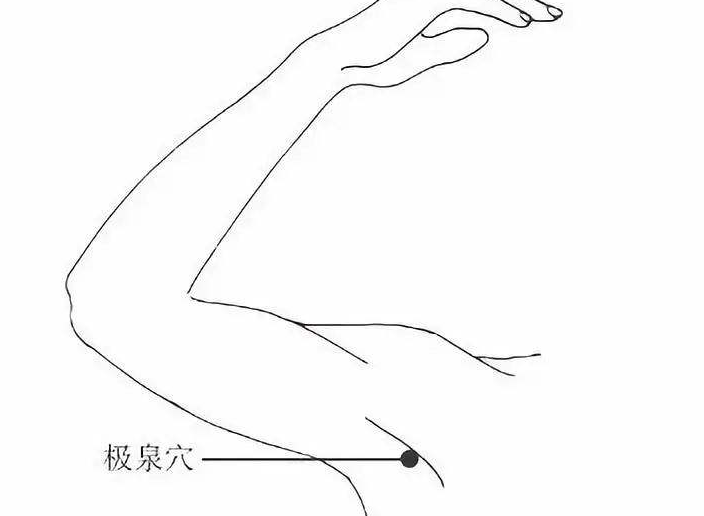
32For Dry Cough and Asthma, Use Zhong Fu (Central Palace) and Yun Men (Cloud Gate) Points
(For cough and asthma)
Method: Massage the Zhong Fu and Yun Men points in a circular motion for 1-2 minutes, maintaining this practice regularly.
The Zhong Fu point is located 1 cun below the Yun Men point, 6 cun from the midline, at the level of the first intercostal space. The Yun Men point is located in the supraclavicular fossa. Both points are on the lung meridian.
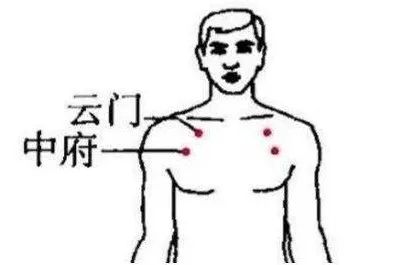
33For Shortness of Breath and Sore Throat, Use Tai Yuan (Great Abyss) Point
(For difficulty breathing, throat pain, and hoarseness)
Method: Gently press the Tai Yuan point with the thumb while supporting the wrist with the other four fingers for 3-5 minutes. You can also use crushed goji berries, apply them to the Tai Yuan point, and secure them with medical tape before sleeping. Remove them in the morning to help alleviate qi deficiency.
The Tai Yuan point is located at the transverse crease of the wrist, at the inner side of the prominent tendon when the palm is extended. It is the point where the pulse can be felt.
34For Cough with Phlegm, Use Yin Ling Quan (Yin Cleft Spring) Point
(For cough with phlegm and black nasal discharge due to spleen deficiency and dampness)
Method: Press the Yin Ling Quan point firmly with the thumb or gently tap it with a small health hammer for at least 3 minutes, three times a day, or apply moxibustion for 3-7 minutes once a day.
The Yin Ling Quan point is located on the inner side of the lower leg, just below the tibial plateau, in the depression behind the medial malleolus. It has the effects of strengthening the spleen, promoting dampness, and relaxing the muscles.
According to TCM theory, the causes of excessive phlegm can include cold, wind, heat, dampness, or dryness invading the lungs. The spleen is responsible for managing dampness and transformation.
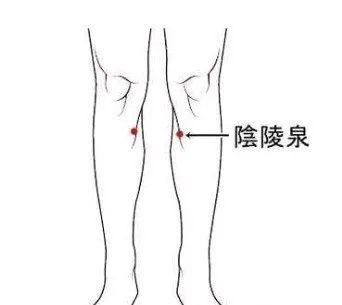
35For Children’s Health, Rub the Yu Ji (Fish Ridge) Point
(For preventing and treating children’s colds and digestive issues)
Method: One hand remains still while the other hand vigorously rubs the Yu Ji point on the opposite palm about 10 times until the entire palm feels warm. Then switch hands and rub the other hand.
Massage techniques for the Yu Ji point can include pushing or rubbing. The direction of the push affects the outcome. Pushing from the base of the thumb towards the wrist crease is effective for treating diarrhea, while pushing from the wrist crease towards the base of the thumb can help stop vomiting. Alternating pushes can effectively regulate the child’s spleen and stomach function. The rubbing time should be between 2-3 minutes, while pushing should be done at least 50-100 times.
The Yu Ji point is located in the depression behind the first metacarpophalangeal joint, at the junction of the red and white skin.
The Yu Ji point also has the functions of relieving exterior symptoms, soothing the throat, and resolving phlegm, making it effective for symptoms such as sore throat, cough, and sneezing caused by colds.
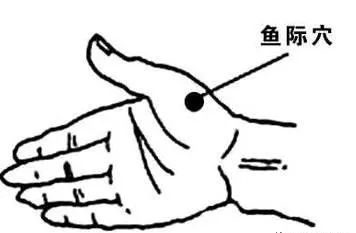
36For Qi Stagnation and Burping, Massage the Zhi Gou (Branch Ditch) Point
(For chest tightness and burping)
Method: Massage the Zhi Gou point for 5 minutes, then rub along the ribs with both palms for 3 minutes.
The Zhi Gou point is located on the dorsal side of the forearm, 3 cun above the wrist crease, on the line connecting the Yang Chi and elbow tip.
This point acts as the body’s “vent”; regular massage can relieve discomfort and promote relaxation.
This point belongs to the San Jiao meridian, which governs the body’s qi.
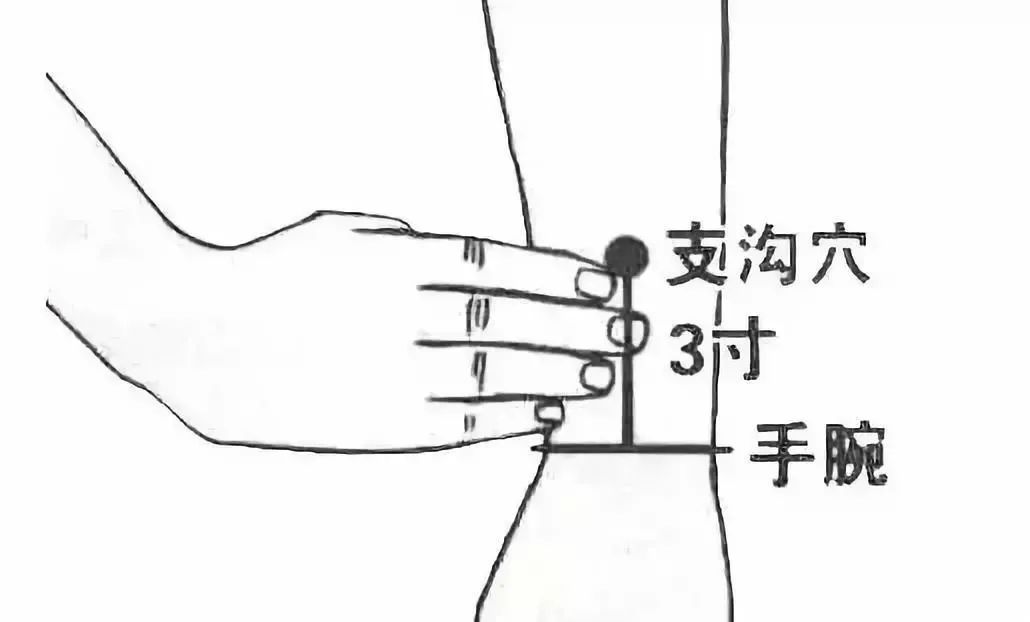
37For Diabetes, Press the Ran Gu (Burning Valley) Point
(For individuals with diabetes)
Method: Firmly press both Ran Gu points until a feeling of strain is felt, then release. Repeat this 10-20 times until the feeling of strain does not go away. Maintain this practice regularly for auxiliary treatment. This point belongs to the kidney meridian, which is associated with water.
For children with poor appetite, mothers can massage this point for improvement.
The Ran Gu point is located on the inner edge of the foot, just below the tuberosity of the navicular bone, at the junction of the red and white skin.
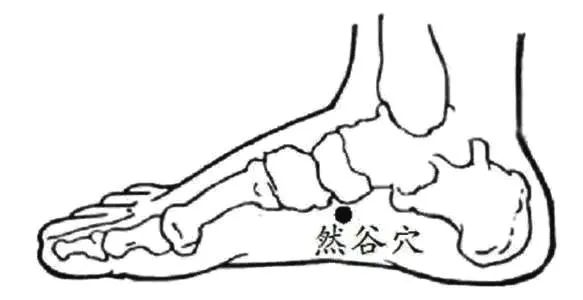
38For Fatty Liver, Use Tai Chong (Great Rush) Point
(For middle-aged individuals with fatty liver)
Method: Soak your feet in warm water for 10-15 minutes, then use the thumb pads to press the Tai Chong point firmly for 30 seconds, pausing briefly, and repeat for a total of 3 minutes. You can also press along the bone seams and slide back and forth, repeating this 20 times. Maintain this practice regularly.
The Tai Chong point belongs to the liver meridian. It has both tonifying and purging effects, promoting blood circulation and clearing the liver, gallbladder, and calming the liver. Regular stimulation can also improve sleep. Treatment for fatty liver should focus on soothing the liver, regulating qi, and promoting blood circulation.
The Tai Chong point is located on the dorsum of the foot, in the depression between the first and second metatarsal bones, about 3 finger widths back.
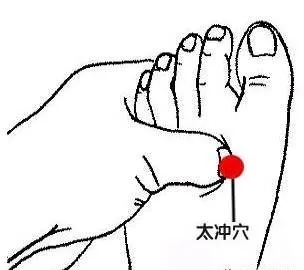
☞☞ Join the 【Beauty Industry Practitioners WeChat Group】 to exchange and learn with beauty professionals nationwide! Click here
